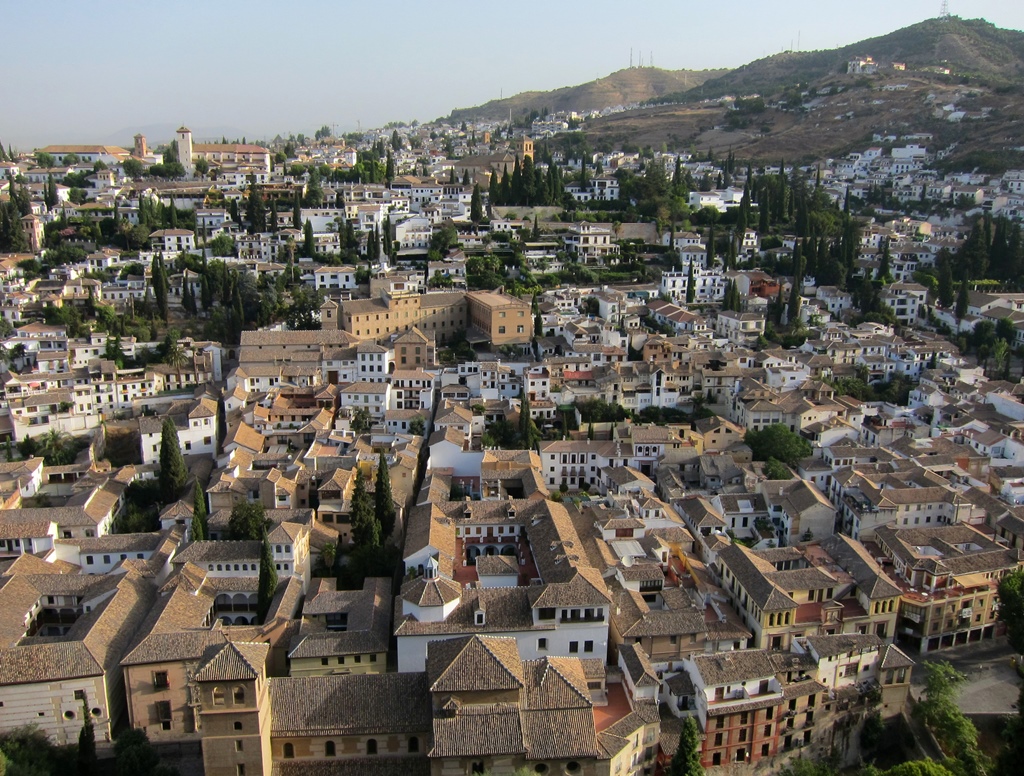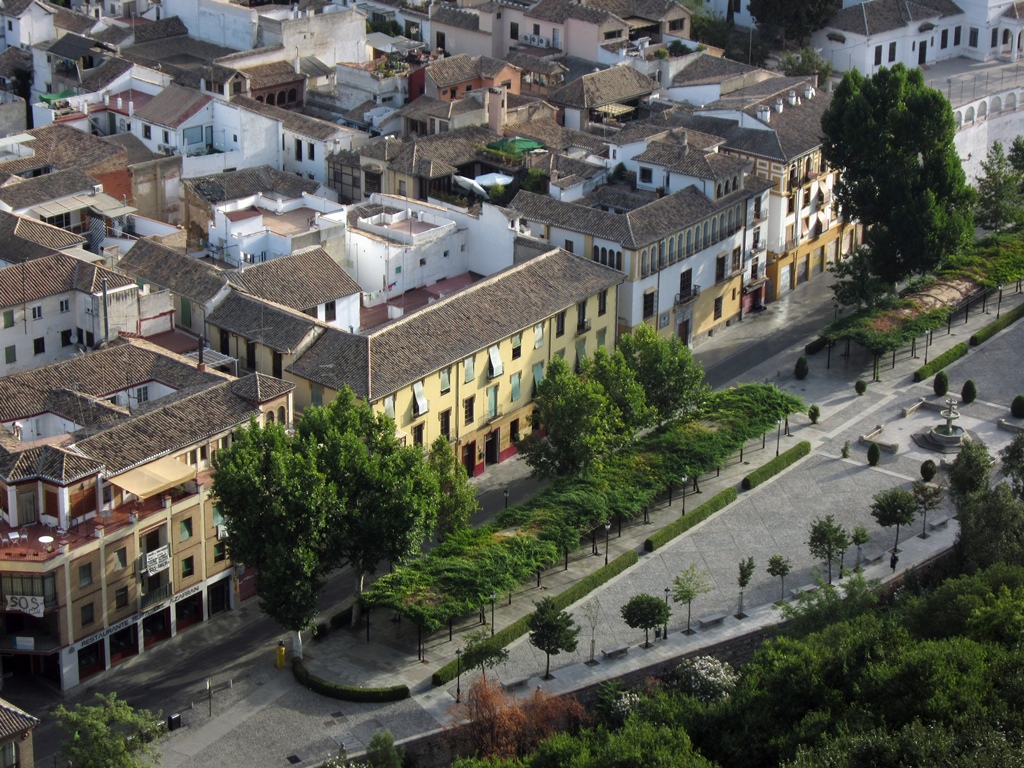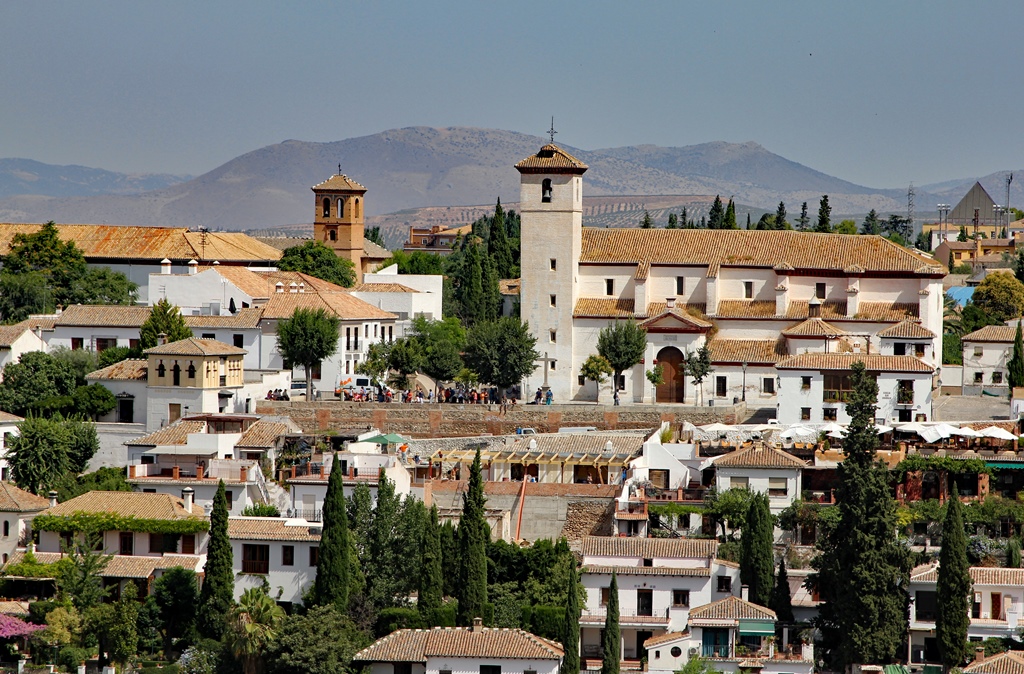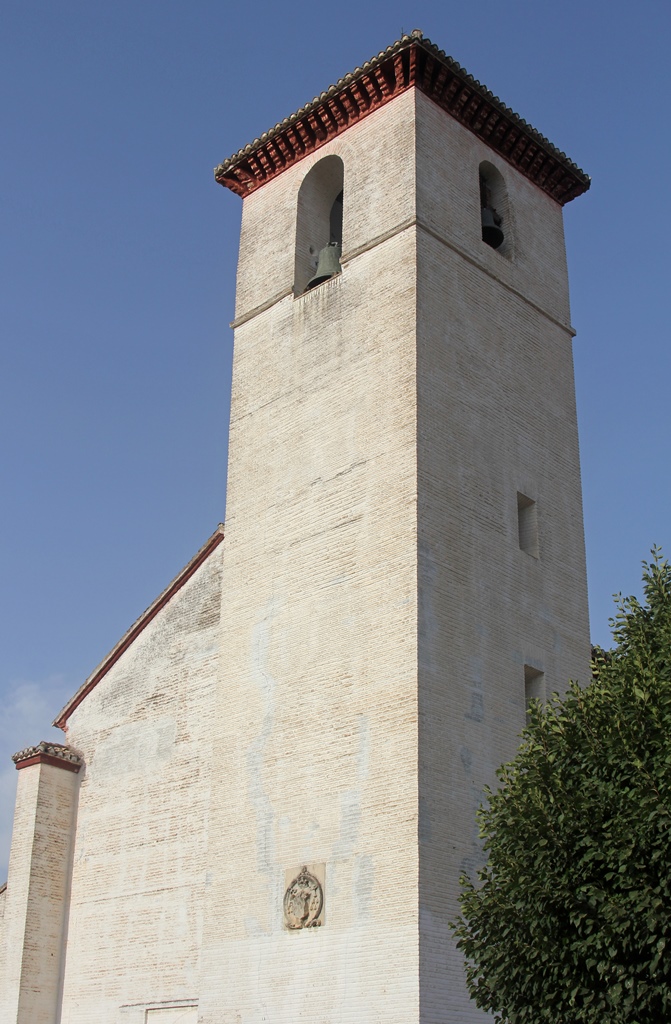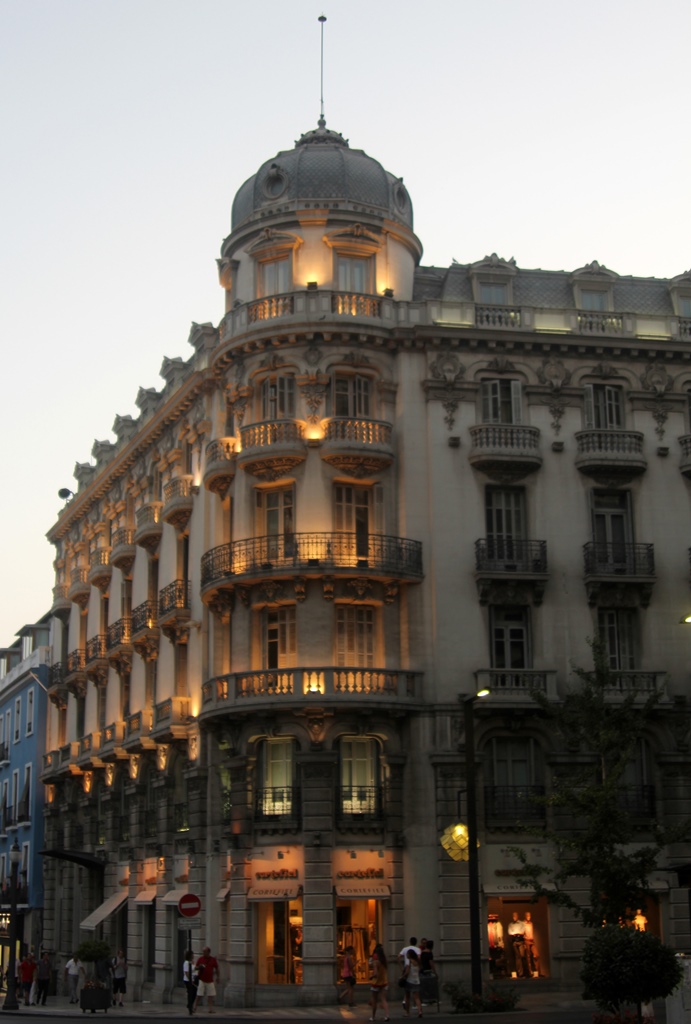Albaicín Quarter
The Albaicín quarter of Granada is located on a hillside to the north of the Alhambra, separated
from the Alhambra's promontory by the Darro River.
Along the Darro
It is very old, predating the Alhambra, and even the Moorish conquest of the Iberian Peninsula.
It did not take on anything like its present character until after the Muslims moved in, however.
Having haphazardly evolved according to the needs of its medieval occupants, it consists of many
narrow, tangled streets with no obvious rhyme or reason to them. This being the case, it presents
a number of navigation challenges to the casual visitor.
The Albaicín was home to various palaces and defensive fortifications over the centuries. With
other emirates falling to the Reconquista, Granada was becoming more and more important as
a Moorish outpost, and the 13th Century saw the main fortifications and palaces starting to move
across to the hill of the Alhambra, as it was more easily defended. But the Albaicín remained a
crowded and lively Muslim community up to and beyond the city's conquest in 1492. It turned out
to be a little too lively for its own good, as mistreatment and forced religious conversions of
some of its residents led to a short-lived rebellion in 1499. The rebellion was quickly put down
by the new rulers, and was used as a pretext to force all Muslim residents in Spain to either
convert to Christianity or leave, completing the process of transforming Spain into an
all-Christian kingdom.
The quarter became more peaceful and outwardly Christian, with all of the mosques replaced by
churches. The departure of some of its wealthier residents led to the abandonment of some
relatively large homes, which were taken over by Christians and rebuilt as homes in a common
configuration known as a carmen. A carmen is enclosed by a wall but typically has a courtyard in
which a profusion of trees, flowers, bushes and climbing plants are grown, with plants often
spilling over the outer walls.
After recovering somewhat from our morning exploration of the Alhambra and the Generalife, we
resolved to spend the rest of our Granada day exploring the Albaicín. Getting to the quarter
wasn't difficult, as our hotel was adjacent to the Plaza Nueva, which was built on top of the
river Darro. Walking upstream, we got to where we could have a look at the mighty Darro, noting
that it didn't amount to much, as least in mid-summer. And looking back downstream, we could see
the trickle disappear into a tunnel beneath the Plaza Nueva, to stay underground through most of
Granada before eventually merging with a river called the Genil. We continued upstream along
Carrera del Darro, idly perusing some of the riverside shops and places to eat.
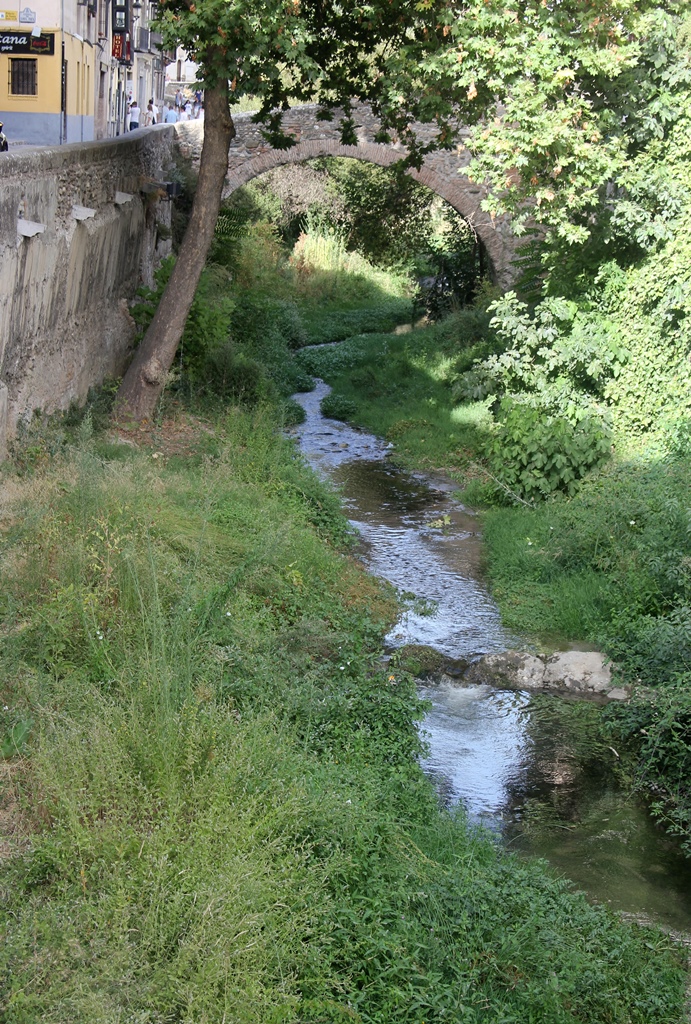
Darro River and Bridge
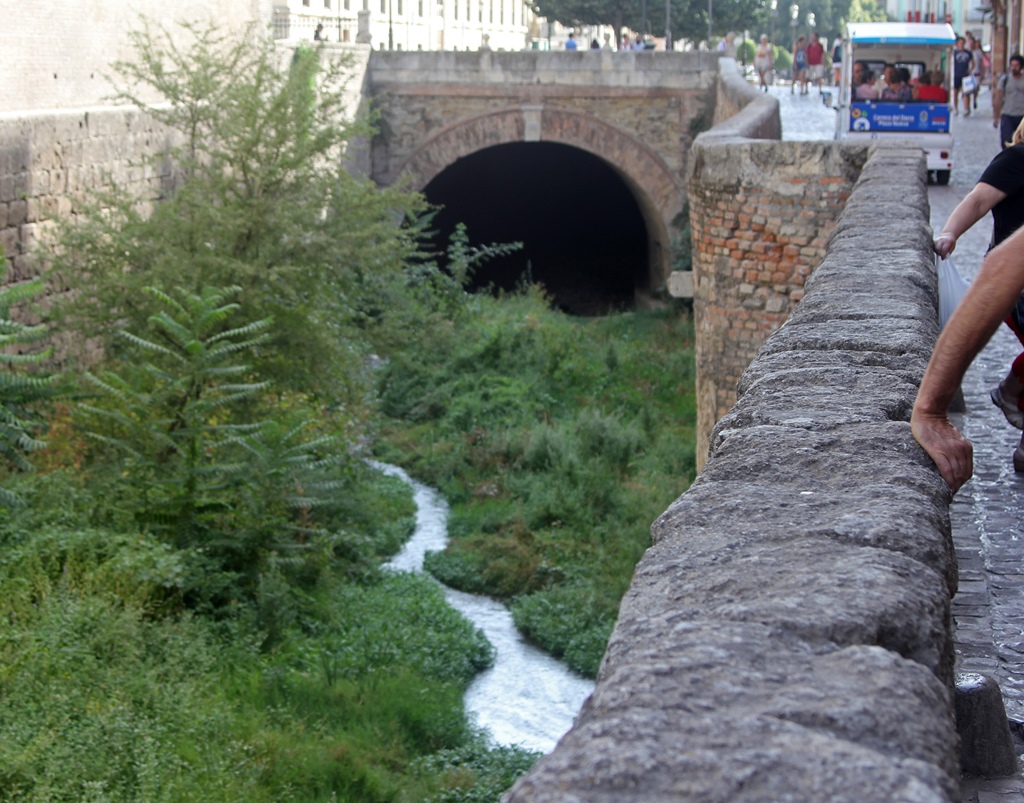
Darro and Tunnel
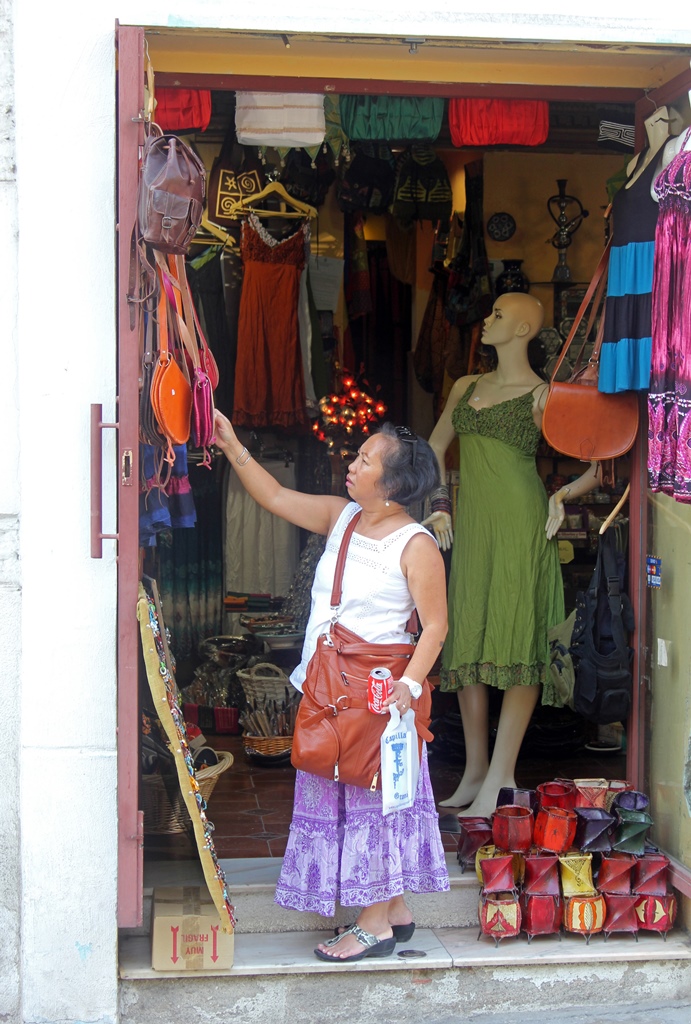
Nella in Shop
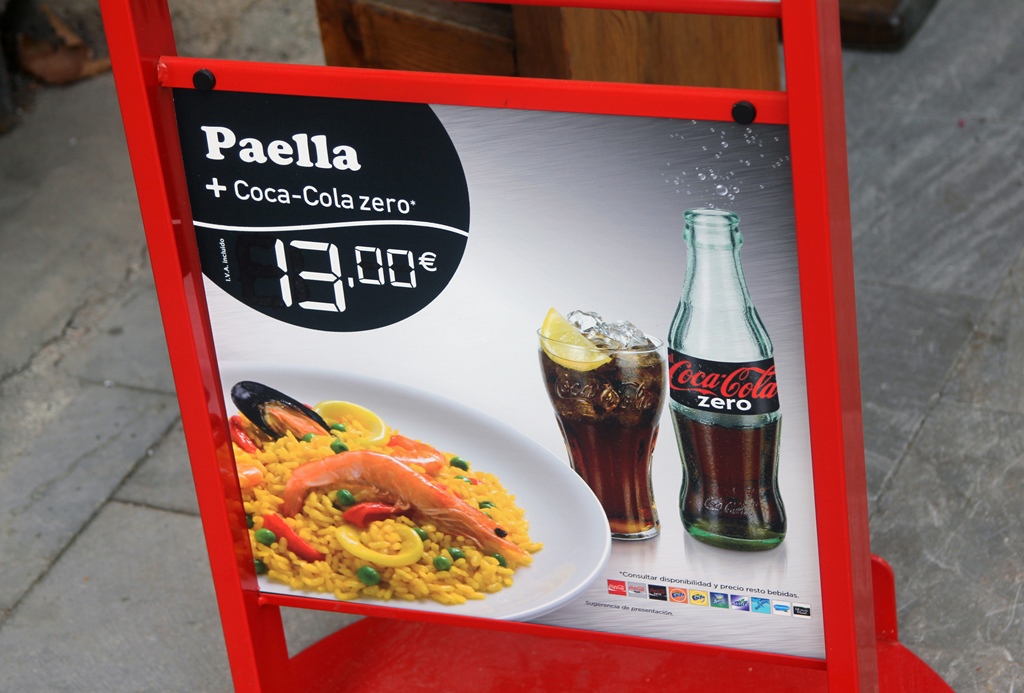
Paella and Coke Zero
While at the Alhambra it occurred to us that a district which we could see so well from the
Alhambra would necessarily have places with good views of the Alhambra. The guidebooks
verified this, recommending a plaza adjacent to the Albaicín's St. Nicholas Church, called the
Mirador de San Nicolas.
St. Nicholas Church and Mirador de San Nicolas
We took a quick look at the Alhambra's Comares Tower, looming above us from our riverside viewpoint,
and then turned around and began to climb the streets of the Albaicín.
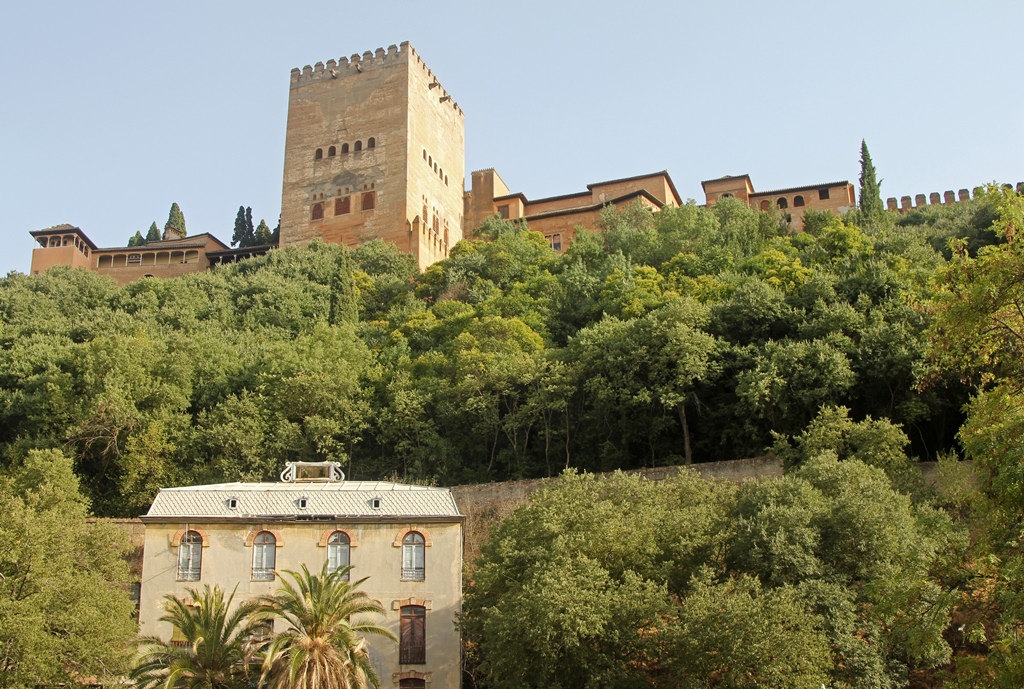
Comares Tower from Below
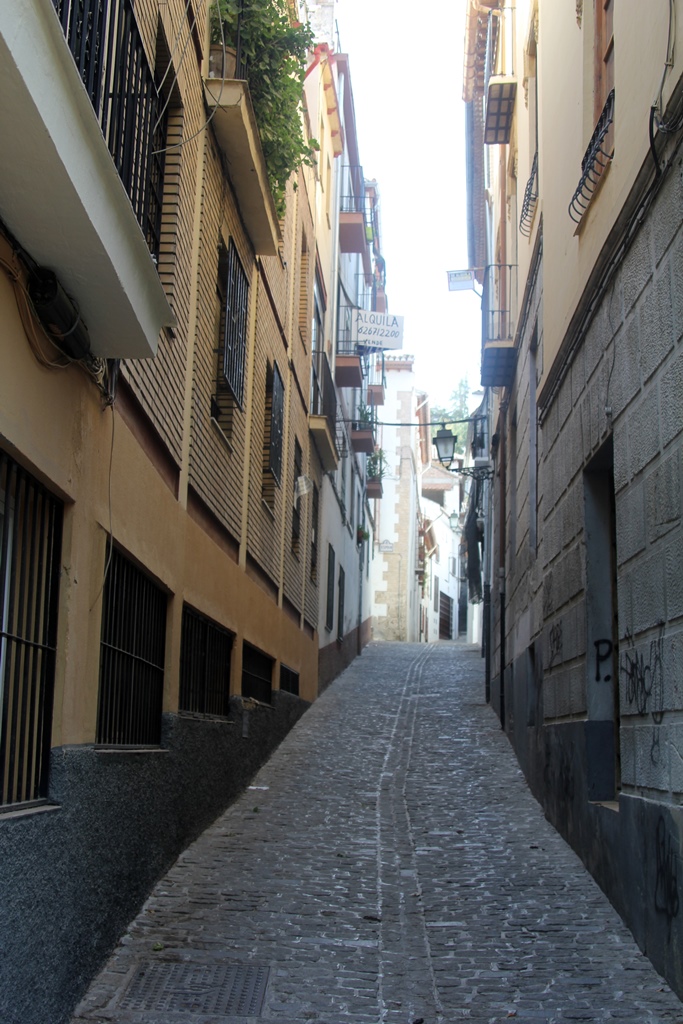
Narrow Street into Albaicín
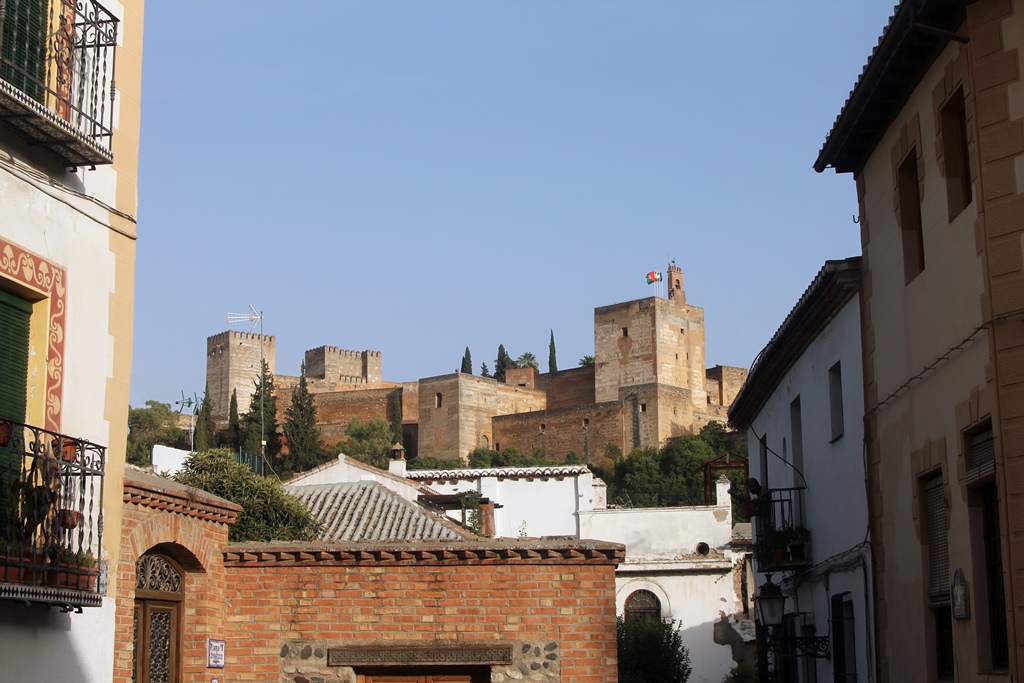
Alcazaba from Albaicín
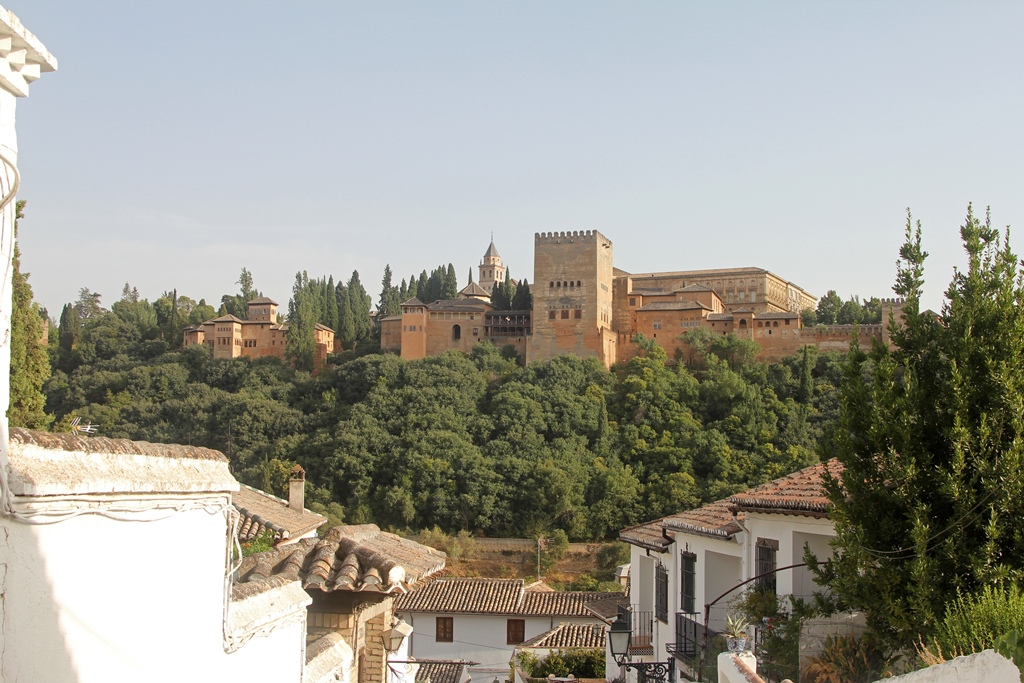
Alhambra Palaces from Albaicín
After a long, steep and sometimes confusing trek we finally reached the St. Nicholas Church
and Mirador de San Nicolas, finding the view to be as advertised. Many other tourists must
have had the same guidebook, as they were congregated in the Mirador, some gazing outward and
others seeming to just soak in the ambience of the place. Flamenco music was coming from
somewhere, sweet smells were coming from the many flowers of the Albaicín, and the Alhambra
looked gorgeous in the late afternoon sun.
Bell Tower, San Nicolas Church

Granada, Alhambra and Generalife
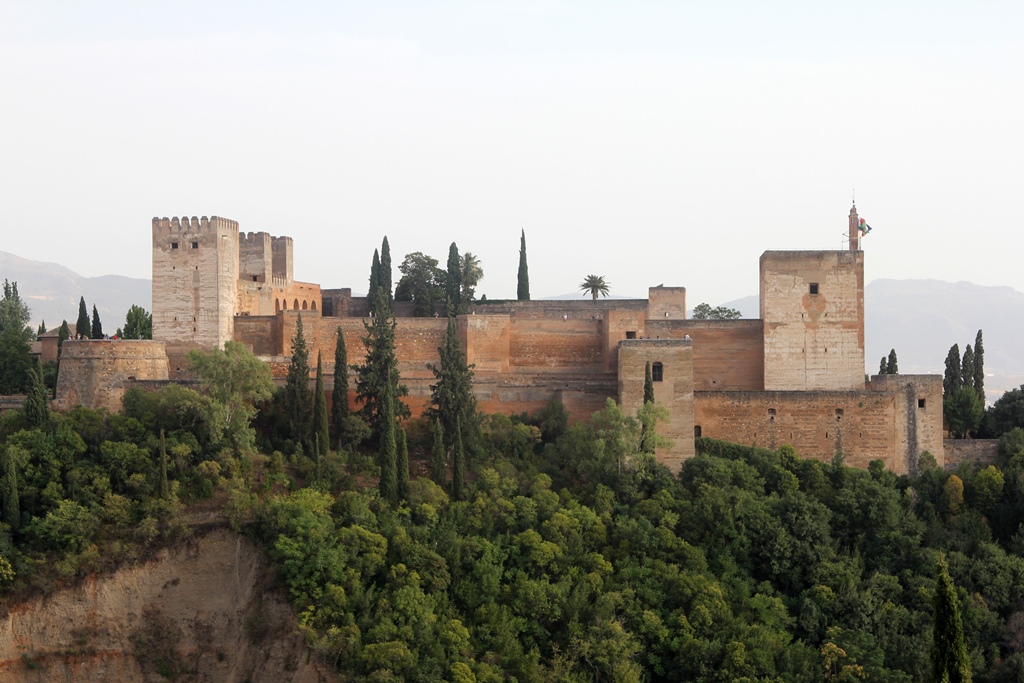
The Alcazaba
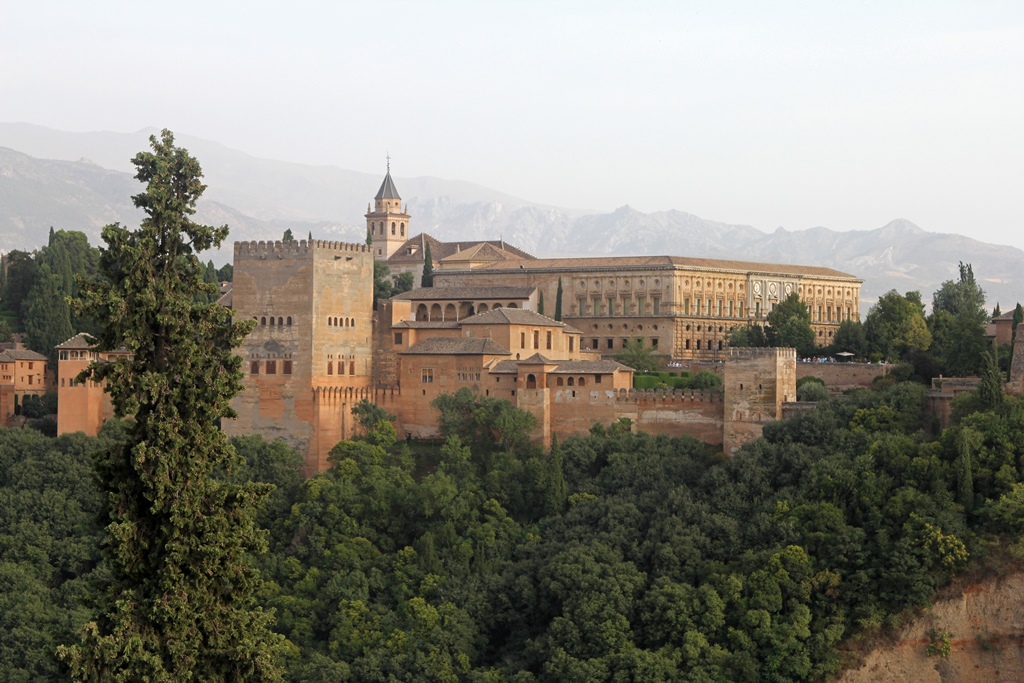
Nasrid Palaces, Palace of Charles V and Sierra Nevada
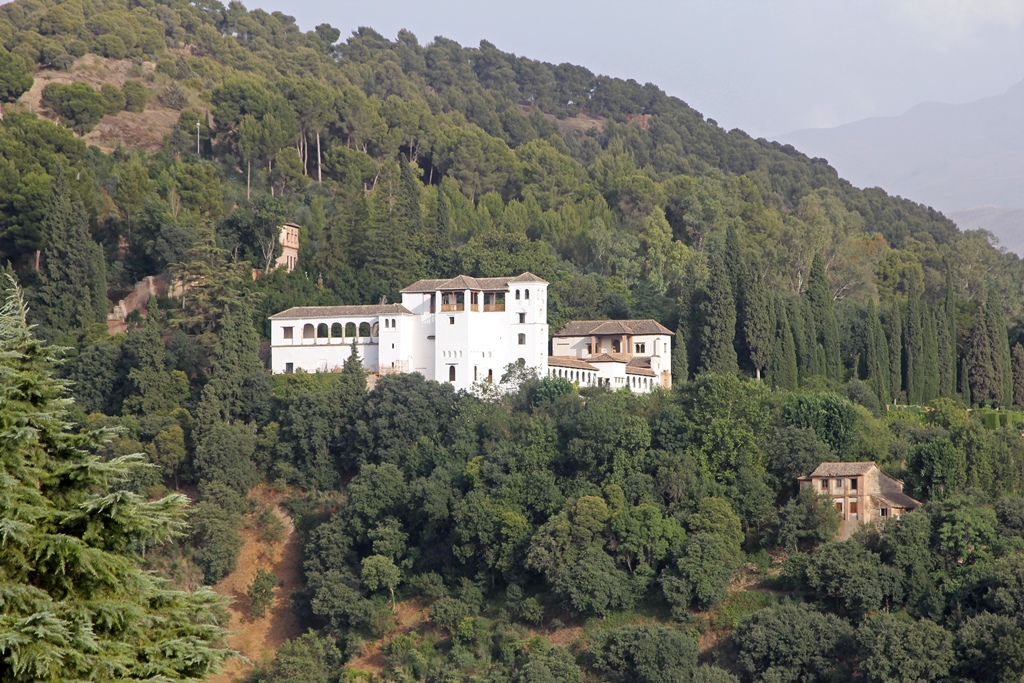
The Generalife

Nasrid Palaces and Alcazaba

Philip and Nella at Mirador de San Nicolas
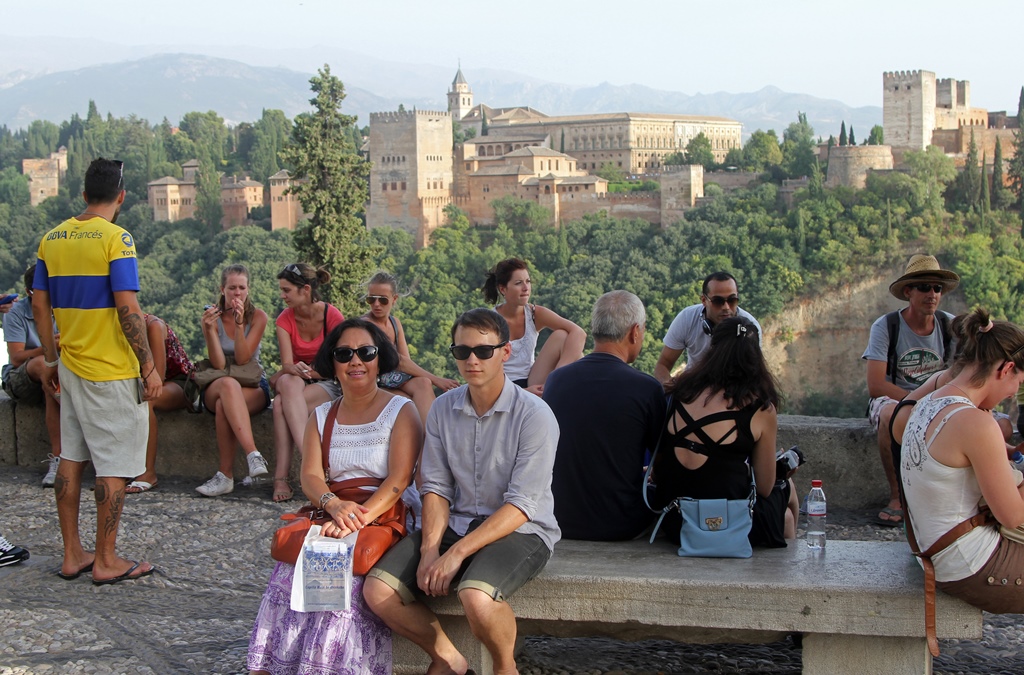
Nella and Philip and Alhambra
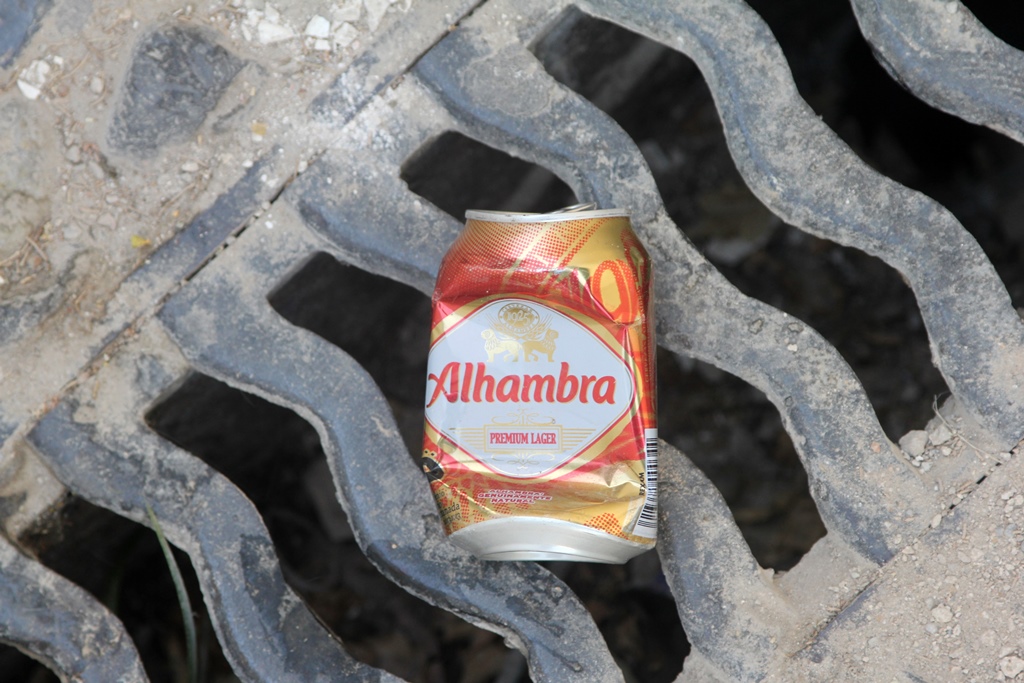
Alhambra Beer Can
While there are apparently many other things to see in the Albaicín, it was getting late and we
weren't all that confident in our ability to find our way back out to the 21st Century in a timely
manner. Instead of doing more sightseeing, we headed generally downhill, trusting in our senses
of direction to get us back to the outside world. Fortunately for us, this worked out OK.
Cortefiel Building, Plaza Isabel La Catolica
We found dinner and returned to the hotel, packing up for our next destination. The following
day we would be boarding a train and heading to Seville.

